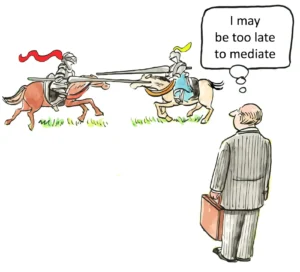Federal Employee Rights Under the “Fork Directive” Resignation Option
In January 2025, over two million federal employees received an email from the Office of Personnel Management (OPM) with the subject line “Fork in the Road.” This communication introduced a controversial program known as “deferred resignation,” offering federal workers a choice that would significantly impact their careers and livelihoods. The program, quickly nicknamed the “Fork Directive,” presents federal employees with an option to announce their future resignation effective September 30, 2025, in exchange for certain benefits and exemptions until that date. This directive has sparked intense legal debates, union challenges, and widespread concern among the federal workforce.
Understanding the Fork Directive
The Fork Directive represents a fundamental shift in federal employment policy, offering federal employees what the administration describes as a “humane offramp” from government service. Under this program, federal employees who choose to resign would receive full pay and benefits until September 30, 2025, regardless of their daily workload. Additionally, these employees would be exempted from return-to-work mandates and potentially placed on administrative leave or given reduced workloads.
The email introducing this program outlined four pillars for the reformed federal workforce that would apply to those who choose to remain:
First, agencies will require employees to physically return to work, eliminating remote work options. This pillar also anticipates geographic disruption and potential relocations for many federal workers.
Second, agencies will update performance standards, rewarding employees who meet these standards while addressing those who do not in what the directive describes as “a fair and open way.”
Third, agencies will undergo downsizing through restructurings, realignments, and reductions in force, potentially resulting in furloughs and reclassification of some employees to at-will status.
Fourth, agencies will subject employees to “enhanced standards of suitability and conduct,” specifically stating that employees should be “reliable,” “loyal,” and “trustworthy”—terms that have raised concerns about political loyalty tests.
The Fork Directive gives employees a limited window to decide their future, initially setting a February 6, 2025 deadline for submission of resignations. Employees who decide to resign must commit to “ensuring a smooth transition” during their remaining time at their agency. While they may accelerate their resignation date, they cannot extend it beyond September 30, 2025.
Legal Challenges to the Fork Directive
The federal employment law landscape surrounding the Fork Directive is complex and contentious. Several labor unions representing federal employees—including the American Federation of Government Employees (AFGE), the American Federation of State, County and Municipal Employees (AFSCME), and the National Association of Government Employees (NAGE)—filed legal challenges against the program, arguing that it violates federal law on multiple fronts.
One of the primary legal concerns involves the Anti-Deficiency Act, which prohibits agencies from obligating funds that Congress has not yet appropriated. Critics argue that since Congress has only authorized government salary through March 14, 2025, the program’s promise of payment through September 30, 2025, potentially violates this law. The administration counters that the Anti-Deficiency Act does not apply because employees who accept the Fork Directive are not being promised compensation from future funding but are rather only receiving their normal salary while on paid administrative leave.
Another significant legal issue concerns federal law on administrative leave, which limits federal employees to 10 business days of administrative leave in each calendar year. The Fork Directive would far exceed this limitation. OPM argues that this 10-day limit does not apply because they issued binding regulations earlier in January 2025 that restricted the 10-day limit to management-initiated actions that put an employee on administrative leave for the purpose of conducting an investigation.
Legal experts have also raised concerns about the enforceability of the deferred resignation agreements. The template agreement circulated by OPM includes troubling provisions that give agencies the power to unilaterally withdraw from the agreement without warning and requires federal employees to waive any right to challenge such a withdrawal. This waiver provision states that the employee is waiving any claim “based on, arising from, or related to Employee’s employment at [Agency] or the deferred resignation offer, including any and all claims that were or could have been brought concerning said matters.”
Judicial Intervention and Current Status
The legal challenges to the Fork Directive quickly made their way to federal court. U.S. District Judge George O’Toole pushed back the February 6 deadline “until further order of the Court” after a hearing in a federal courtroom in Boston. This judicial intervention came in response to the lawsuit filed by the federal employee unions.
In court, Department of Justice attorneys defended the program, arguing that congressional approval for the deferred resignation program is unnecessary “because employees would remain in duty status and entitled to their regular pay and benefits” until September 30. They also contended that the resignation offer is not a “final agency action” and therefore not subject to judicial review, describing it as “a matter of pure internal governmental administration.”
The government rejected claims that the Fork Directive is coercive and attempted to shift legal responsibility away from OPM and toward employees who accept the offer. According to government attorneys, “That email announcing the voluntary resignation program does not determine any rights or obligations, and no legal consequences flow from the program itself. Rather, any legal consequences would flow from a federal employee’s choice in accepting the voluntary resignation offer.”
Despite these legal challenges, approximately 65,000 federal employees—roughly 3% of the federal workforce—had agreed to resign as of early February 2025, according to administration figures.
Implications for Federal Employee Rights
The Fork Directive raises significant questions about federal employee rights and protections. Federal employees who have dedicated their careers to public service now face difficult decisions with potentially far-reaching consequences for their professional futures and financial security.
For employees considering accepting the deferred resignation offer, understanding their legal rights is crucial. The waiver provisions in the agreement template could potentially strip employees of important legal protections and recourse if the government fails to fulfill its promises. Additionally, the program’s provisions regarding outside employment during the deferred resignation period may be misleading, as longstanding federal ethics regulations place numerous restrictions on the outside employment opportunities available to current federal workers.
Federal employees who choose to remain in government service face their own set of challenges. The four pillars outlined in the Fork Directive email signal significant changes to working conditions, performance expectations, and job security. The emphasis on loyalty and trustworthiness has raised concerns about potential political tests for career civil servants, which could undermine the merit-based principles that have long governed the federal workforce.
The civil service protection system was designed to ensure that the federal government operates based on expertise and merit rather than political patronage. Critics argue that the Fork Directive represents an attempt to circumvent these protections and replace career civil servants with politically loyal appointees, potentially undermining the effectiveness and independence of federal agencies.
Broader Implications for Government Operations
Beyond its impact on individual federal employees, the Fork Directive has significant implications for government operations and the delivery of essential services to the American public. Federal employees perform critical functions across a wide range of areas, from ensuring the safety of our food and medications to managing national security and delivering Social Security benefits.
A mass exodus of experienced federal employees could create significant knowledge gaps and disrupt the continuity of government operations. While the administration has characterized the Fork Directive as part of an effort to create a more efficient government, critics argue that it could have the opposite effect by driving out experienced professionals with institutional knowledge that is difficult to replace.
The potential impact on government efficiency is particularly concerning given the complex nature of many federal programs and regulations. Effective implementation and enforcement of these programs require not only technical expertise but also an understanding of the historical context and evolution of policies over time. This institutional knowledge is often held by career civil servants who have worked in their fields for decades.
Moreover, the uncertainty created by the Fork Directive could impact morale and productivity among the remaining federal workforce. Employees who choose to stay may face increased workloads as colleagues depart, as well as anxiety about their own job security and working conditions under the new pillars outlined in the directive.
Historical Context and Precedents
The Fork Directive is not without historical precedent in terms of efforts to reshape the federal workforce, though its scale and approach are unprecedented in modern times. Previous administrations have implemented various forms of buyouts, early retirement incentives, and reorganizations to reduce the size of the federal workforce or realign agencies with new priorities.
However, the Fork Directive differs from these previous efforts in several key ways. First, it offers continued employment and full pay for an extended period rather than a one-time separation payment. Second, it explicitly frames the choice in terms of loyalty and willingness to adapt to a new vision for the federal workforce. Third, it applies broadly across most of the federal government rather than targeting specific agencies or functions.
The directive’s name and approach bear a striking resemblance to an email sent to Twitter (now X) employees following Elon Musk’s acquisition of the company. That email, also titled “Fork in the Road,” gave employees a choice between committing to a new “hardcore” work culture or accepting severance. The similarities have not gone unnoticed, particularly given Musk’s role as an adviser to the administration on government efficiency.
However, as many legal experts have pointed out, the federal government is not a private company, and its human resource policies are governed by complex statutory frameworks that do not apply in the private sector. These legal constraints limit the administration’s ability to unilaterally change employment terms for career civil servants.
Employee Decision-Making Factors
Federal employees facing the Fork Directive must weigh numerous factors in making their decision. For many, this represents one of the most consequential career decisions they will ever make, with implications not only for their immediate financial situation but also for their long-term career trajectory and retirement benefits.
Financial considerations are paramount for most employees. The offer of continued full pay and benefits until September 30, 2025, may be attractive, particularly for employees nearing retirement or those who have been considering a career change. However, this must be balanced against the uncertainty of whether these promises will be fulfilled given the legal challenges to the program.
Federal retirement benefits are another crucial consideration. The federal government offers defined benefit pension plans that are based on years of service and highest average salary. Employees who are close to retirement eligibility thresholds may find that accepting the deferred resignation offer allows them to reach these thresholds while receiving full pay, potentially maximizing their retirement benefits.
Career federal employees must also consider the impact on their professional reputation and future employment prospects. While the Fork Directive allows for outside employment during the deferred resignation period (subject to agency restrictions), transitioning to the private sector or to state and local government positions may present challenges, particularly for those whose skills and experience are specialized to federal programs and regulations.
Health insurance is another significant factor. Federal employees have access to the Federal Employees Health Benefits Program, which offers a wide range of health insurance plans. Employees who resign will need to consider how they will obtain health insurance coverage after their separation from federal service, particularly if they are not immediately transitioning to another employer that offers comparable benefits.
Agency-Specific Considerations
While the Fork Directive applies broadly across the federal government, its implementation and impact vary significantly across different agencies. The directive specifically excludes certain categories of employees, including “military personnel of the armed forces, the U.S. Postal Service, positions related to immigration enforcement and national security, and any other positions specifically excluded by your employing agency.”
Beyond these explicit exclusions, agencies have discretion in how they implement certain aspects of the program, such as the criteria for approving requests to rescind resignations and the restrictions on outside employment during the deferred resignation period. This agency-specific discretion creates additional complexity for employees trying to make informed decisions.
Some agencies may face more significant restructuring or downsizing than others based on administration priorities. Employees in agencies that have been publicly identified as targets for major reforms or budget reductions may face greater pressure to accept the deferred resignation offer, as their likelihood of being affected by reductions in force or reassignments may be higher.
The nature of an agency’s work and workforce also influences the potential impact of the Fork Directive. Agencies with highly specialized workforces, such as scientific research agencies or financial regulatory bodies, may face particular challenges if they lose significant numbers of employees with specialized expertise that is difficult to replace quickly.
Union Response and Employee Advocacy
Federal employee unions have been at the forefront of challenging the Fork Directive, both through legal action and through advocacy and education efforts for their members. These unions argue that the directive represents an unlawful attempt to circumvent civil service protections and coerce employees into resigning.
AFGE National President Everett Kelley characterized the deferred resignation scheme as “unfunded, unlawful, and comes with no guarantees,” warning that federal employees shouldn’t be “misled by slick talk from unelected billionaires and their lackeys.” Similarly, AFSCME President Lee Saunders described the actions as “illegal and a scam,” warning that they are “eroding the health and well-being of our communities.”
Unions have been providing their members with information about their rights and the potential risks of accepting the deferred resignation offer. They have emphasized the legal uncertainties surrounding the program and the waiver provisions that could limit employees’ ability to seek recourse if the government fails to fulfill its promises.
Beyond the immediate legal challenges to the Fork Directive, unions are advocating for legislative action to protect the civil service system and prevent similar actions in the future. They argue that the directive represents a broader threat to the merit-based principles that have governed federal employment since the passage of the Pendleton Civil Service Reform Act in 1883.
Political Context and Policy Objectives
The Fork Directive must be understood within the broader political context of the administration’s approach to government and its policy objectives regarding the federal workforce. President Trump has long promised to reduce the size of the federal workforce, and the deferred resignation program furthers that goal by offering most full-time federal employees the opportunity to resign in exchange for certain benefits.
The directive aligns with the administration’s stated goal of creating a more politically loyal workforce. The emphasis on loyalty and trustworthiness in the four pillars outlined in the email has raised concerns about potential political tests for career civil servants, which could undermine the merit-based principles that have long governed the federal workforce.
Critics argue that the Fork Directive is part of a broader strategy to replace career civil servants with political appointees who are loyal to the administration rather than to the mission of their agencies or to constitutional principles. They point to the parallels with Project 2025, a conservative policy blueprint that calls for significant changes to the federal workforce and expanded political control over traditionally independent agencies.
Supporters of the directive argue that it represents a necessary reform to improve government efficiency and accountability. They contend that the federal workforce has become bloated and unresponsive, and that more direct political control over agencies is needed to ensure that they implement the president’s agenda effectively.
Long-term Implications for the Civil Service
The Fork Directive could have lasting implications for the federal civil service system, regardless of its immediate outcome. The civil service system was established to ensure that the federal government operates based on expertise and merit rather than political patronage, and to provide continuity across administrations with different political priorities.
If the directive succeeds in prompting a significant exodus of career civil servants, it could weaken this system by reducing the institutional knowledge and expertise within agencies. This could make agencies more susceptible to political influence and less effective at implementing complex programs and regulations.
The legal precedents established through challenges to the Fork Directive will also shape the boundaries of executive authority over the federal workforce for years to come. If courts uphold the administration’s authority to implement programs like the deferred resignation offer, it could expand executive power over federal employment in ways that have lasting implications beyond this specific initiative.
Conversely, if courts strike down key aspects of the Fork Directive, it could reinforce legal protections for career civil servants and establish clearer limits on executive authority to reshape the federal workforce without congressional approval.
The directive also raises broader questions about the relationship between political leadership and career expertise in government. Finding the right balance between political responsiveness and professional independence has been a perennial challenge in public administration, and the Fork Directive represents one approach to this balance that prioritizes political control.
Advice for Federal Employees
Federal employees facing the Fork Directive must make complex decisions with potentially far-reaching consequences for their careers and financial security. While each employee’s situation is unique, there are several general considerations that may help inform these decisions.
First, employees should carefully review the specific terms of the deferred resignation agreement, paying particular attention to the waiver provisions and the conditions under which the agency can rescind the agreement. Understanding these terms is crucial for making an informed decision.
Second, employees should consider their proximity to retirement eligibility thresholds and the potential impact of accepting or declining the offer on their retirement benefits. For employees who are close to reaching eligibility for retirement, the deferred resignation program may provide a bridge to retirement with full pay and benefits.
Third, employees should assess their marketability in the private sector or in state and local government positions. Those with in-demand skills and experience may have more options for post-federal employment, making the deferred resignation offer less risky.
Fourth, employees should consider the specific circumstances of their agency and position. Some agencies may face more significant restructuring or downsizing than others based on administration priorities, which could affect the likelihood of being impacted by reductions in force or reassignments if they choose to stay.
Finally, employees should stay informed about the ongoing legal challenges to the Fork Directive and any changes to its implementation. The judicial decisions in these cases could significantly impact the program’s terms and enforceability.
Conclusion
The Fork Directive represents a significant shift in federal employment policy with far-reaching implications for federal employees, government operations, and the civil service system. Its introduction has sparked intense legal debates, union challenges, and widespread concern among the federal workforce.
As the legal challenges to the directive continue to unfold, federal employees must navigate a complex landscape of uncertainty, weighing the potential benefits of accepting the deferred resignation offer against the risks and uncertainties associated with this unprecedented program.
The outcome of these legal challenges will not only determine the fate of the Fork Directive itself but also shape the boundaries of executive authority over the federal workforce for years to come. At stake are fundamental questions about the nature of the civil service, the balance between political leadership and career expertise, and the rights and protections afforded to federal employees.
Regardless of the ultimate outcome, the Fork Directive has already had a significant impact on the federal workforce, prompting thousands of employees to announce their resignations and creating uncertainty for those who remain. The long-term implications of this initiative for government operations, policy implementation, and the delivery of services to the American public remain to be seen.
As federal employees navigate this challenging landscape, they must carefully consider their options, seek reliable information, and make decisions that best serve their individual circumstances and career goals. The choices they make in response to the Fork Directive will shape not only their own professional futures but also the future of the federal workforce and the government’s ability to fulfill its essential functions.
Future Outlook and Potential Developments
As the legal battle over the Fork Directive continues, several potential developments could significantly impact its implementation and effectiveness. The judicial decisions in pending cases will be crucial in determining whether the program can proceed as designed or must be modified to comply with federal law.
If courts ultimately rule that the Fork Directive violates federal law, the administration may need to develop alternative approaches to achieving its workforce reduction goals. This could include more traditional buyout programs, early retirement incentives, or reorganizations that comply with existing legal frameworks for federal employment.
Congressional action could also shape the future of the Fork Directive and similar initiatives. Congress has the authority to pass legislation that either restricts or expands the administration’s authority over the federal workforce. It could also address funding issues by explicitly appropriating funds for the deferred resignation program or prohibiting the use of funds for this purpose.
The response of federal employees to the Fork Directive will also influence its impact and effectiveness. If a significant number of employees accept the offer, it could achieve the administration’s goal of reducing the size of the federal workforce. However, if the program primarily attracts employees who were already planning to leave government service or those nearing retirement, its impact on overall workforce size and composition may be limited.
Finally, the long-term implications of the Fork Directive for the federal workforce and government operations will depend on how agencies adapt to potential staffing changes and how the administration implements the four pillars outlined in the directive for employees who choose to remain in government service.
As these developments unfold, federal employees, agency leaders, and policymakers will need to navigate a complex and evolving landscape, balancing competing priorities and interests in shaping the future of the federal workforce and the government’s ability to fulfill its essential functions.
Citations:
- https://www.lawfaremedia.org/article/breaking-down-opm-s–fork-in-the-road–email-to-federal-workers
- https://www.theregreview.org/2025/02/25/conrad-the-fork-in-the-road/
- https://kcnfdc.com/blog/legal-questions-surrounding-the-trump-administrations-deferred-resignation-offer-navigating-the-fork-in-the-road/
- https://www.wardandsmith.com/articles/key-employment-law-issues-employers-need-to-watch-in-2025
- https://www.iowapublicradio.org/news-from-npr/2025-02-10/trumps-fork-in-the-road-resignation-offer-for-federal-workers-is-in-judges-hands
- https://www.wga.com/news/federal-employment-law-updates-for-2025/
- https://democracyforward.org/updates/fork-directive-challenge/
- https://health.wusf.usf.edu/2025-02-10/trumps-fork-in-the-road-resignation-offer-for-federal-workers-is-in-judges-hands
- https://www.laboremployment-lawblog.com/labor-and-employment-2025-federal-legal-updates/
- https://www.afge.org/article/judge-blocks-implementation-of-fork-directive-as-requested-by-afge-allies/
- https://www.afscme.org/press/releases/2025/trump-administration-fork-directive-unlawful-as-written-unions-urge-court-to-find
- https://www.opb.org/article/2025/02/10/trump-s-resignation-offer-to-federal-employee-is-in-judge-s-hands/
- https://www.gelawyer.com/blog/2025/02/new-fork-in-the-road-deferred-resignation-guidance-and-draft-waiver-agreement-analyzed/
- https://fedscoop.com/trump-federal-workforce-buyouts-legal-or-not/
- https://www.npr.org/2025/02/12/nx-s1-5293079/trump-musk-federal-employees-fork-resign-buyout
- https://www.afge.org/article/project-2025-seeks-to-dismantle-agencies-terminate-up-to-1-million-federal-workers/
- https://www.littler.com/publication-press/publication/employment-law-update-new-laws-2025
- https://www.mayerbrown.com/en/insights/publications/2024/11/united-states-employment-2024-highlights-and-2025-outlook














![Life Insurance – The Ultimate Estate Planning Tool [Video] - Attorneys.Media - Legal Expert Interviews & Trusted Advice Watch: Life Insurance – the Ultimate Estate Planning Tool with Andrew Dósa – Tacoma & Oakland](https://b3514829.smushcdn.com/3514829/wp-content/uploads/2025/09/life-insurance-form-SBI-300194206-300x200.jpg?lossy=2&strip=1&webp=1)





